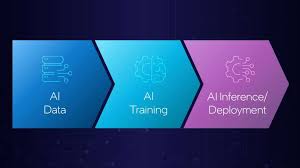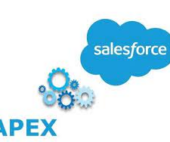AI Inference vs. Training: Key Differences and Tradeoffs
AI training and inference are the foundational phases of machine learning, each with distinct objectives and resource demands. Optimizing the balance between the two is crucial for managing costs, scaling models, and ensuring peak performance. Here’s a closer look at their roles, differences, and the tradeoffs involved.
Understanding Training and Inference
- Training Phase
During training, a model learns patterns and relationships from a dataset. Developers feed labeled data to the model, adjust its parameters to minimize errors, and iterate until it reaches the desired accuracy.- Example: Training an image recognition model involves analyzing millions of labeled images (e.g., cats and dogs) to identify distinguishing features like ear shapes or body outlines. Similarly, for an e-commerce recommendation system, a model studies historical user data (clicks, purchases, and ratings) to identify preferences.
- Inference Phase
Inference occurs after deployment, where the trained model applies its knowledge to make predictions or generate outputs in response to new, unseen data.- Example: When an AI chatbot answers a question, an e-commerce site suggests a product, or an image generation tool like MidJourney creates a graphic, the underlying AI model is performing inference.
Key Differences Between Training and Inference
1. Compute Costs
- Training:
Training requires intensive computations, large datasets, and iterative processing, which demand significant compute resources and hardware investments.- Cost Profile: High initial expense due to its resource-intensive nature, but costs are episodic and tied to distinct training phases.
- Inference:
Inference incurs ongoing compute costs after deployment, as the model processes real-time data and user queries.- Cost Profile: Continuous and can surpass training costs in high-demand, large-scale applications (e.g., public-facing AI tools). Models often prioritize efficient inference, even if it increases training complexity.
2. Resource and Latency Considerations
- Energy Consumption:
Both training and inference consume significant energy, raising operational and environmental concerns. Energy-efficient hardware, such as Tensor Processing Units (TPUs) and Field-Programmable Gate Arrays (FPGAs), can help mitigate these impacts. - Latency:
- Inference latency is critical for real-time applications like augmented reality or generative AI, where speed directly affects user experience.
- Training latency is less of a concern but becomes relevant in scenarios requiring frequent retraining, such as dynamic environments or pharmaceutical research.
Strategic Tradeoffs Between Training and Inference
- Performance Optimization
- Allocating more compute resources to inference can enhance real-time performance, potentially reducing the need for intensive retraining.
- Conversely, prioritizing training resources can produce a highly efficient model, lowering inference costs and resource needs over time.
- Avoiding Overtraining and Overfitting
- Overtraining can cause overfitting, where a model performs well on training data but poorly on new, real-world data. Overfitting also risks model drift, where accuracy degrades over time.
- Techniques like pruning (removing redundant model components post-training) can mitigate overfitting and reduce inference costs without sacrificing performance.
- Balancing Scale and Cost
- For large-scale models: Reducing inference costs becomes the priority. Opt for techniques that lower computational demands during inference, even at the expense of higher training costs.
- For performance-critical tasks: Focus on optimizing both training and inference, ensuring efficient resource allocation across phases.
Key Considerations for Balancing Training and Inference
- Performance Needs:
If real-time responsiveness is essential, prioritize inference optimization. - Scale of Deployment:
For public-facing or high-demand models, reducing inference costs is critical to maintain affordability and scalability.
As AI technology evolves, hardware advancements may narrow the gap in resource requirements between training and inference. Nonetheless, the key to effective machine learning systems lies in strategically balancing the demands of both processes to meet specific goals and constraints.
🔔🔔 Follow us on LinkedIn 🔔🔔













